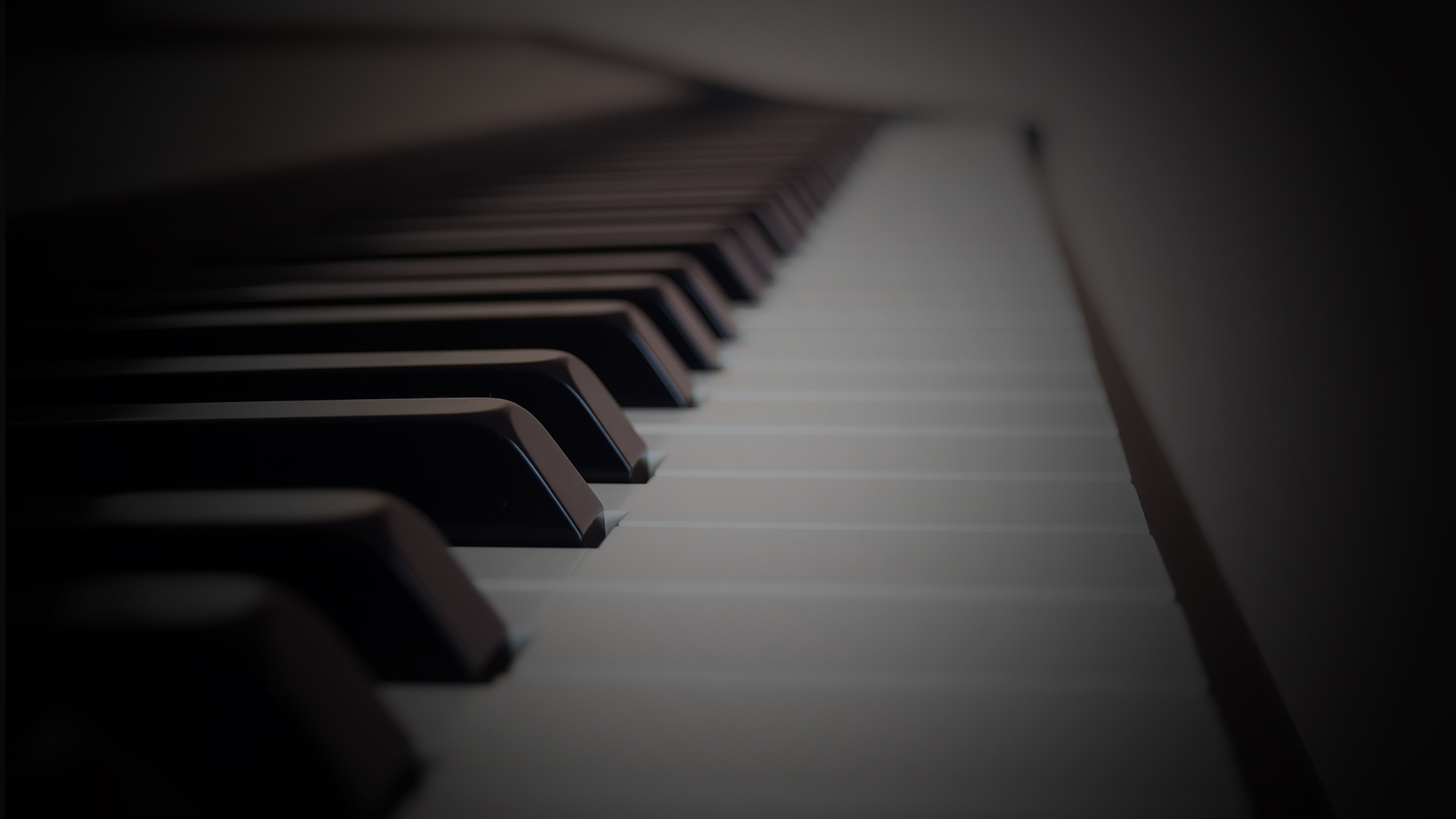Play Funk Piano: Beginner Guide
Learning Focus
Music Style
Free Lessons
Get free weekly lessons, practice tips, and downloadable resources to your inbox!
Do you want to learn how to improvise in the funk style, but you don’t know where to begin? In today’s Quick Tip, Play Funk Piano: Beginner Guide, Jonny May helps students explore the world of funk keyboard playing by equipping them with essential funk performance techniques. You’ll learn:
This lesson follows a straightforward 5-step outline that piano students of all levels and abilities will be able to easily understand and apply. Moreover, students will discover that these funk piano techniques are tons of fun to play!
Intro to Funk Piano for Beginners
If you’re new to playing funk music on piano, then the most important point of entry is actually listening to it. In fact, you should actually get up out of your seat and try dancing to it too! That’s because the most identifiable characteristic of funk music is its infectious, danceable beat. Funk musicians simply refer to this as “the groove.” If fact, groove is so important to funk music that if you play all the correct notes and chords, but the feel isn’t right, well then…that ain’t funk!
If a picture is worth a thousand words, then a reference recording might be worth tens of thousands of words. Therefore, we recommend that you take some time to enjoy listening to following popular funk songs from the 60s, 70s and 80s. Of course, be sure to observe to the groove. It’s that aspect of the music that gets your foot tapping almost immediately!
The Isley Brothers
“It’s Your Thing” (1969)
Funkadelic
“One Nation Under a Groove” (1978)
The Gap Band
“Outstanding” (1982)
For additional listening examples and a brief history of American funk music, check out our Quick Tip on The Top 10 Piano Funk Licks (Int), where you’ll also find some great next-level techniques to fuel your funk piano solos.
Now that’s we’ve addressed the essence of funk music, let’s discover out how to put it into our fingers in the next section.
Play Beginner Funk Piano in 5 Steps
Jonny’s outline for today’s Quick Tip identifies 5 sequential steps that beginner piano students can follow to begin playing funk music. In this section, we’ll take a closer look at each step and examine some additional playing demonstrations. Before going on, be sure to take a moment to download the lesson sheet PDF and backing tracks that are included with this lesson. These resources appear at the bottom of this page after logging in with your membership. In addition, PWJ members can easily transpose this lesson to any key using our Smart Sheet Music.
Step 1: Beginner Funk Piano Chords
The first step to play beginner funk piano music is to learn a simple chord progression. In fact, some funk songs contain rather sparse progressions with as few as one or two chords. This works musically because the drums, bass, guitars, keys and horns all lock in together to construct an irresistible groove.
The following example illustrates a beginner piano approach for how to how play a chord progression from Dm7 to G. Using the Number system, we express this progression as movement from Ⅰm7→Ⅳ in the key of D minor. Let’s watch and listen…
Beginner Funk Chords for Left Hand

If you’re already familiar with 7th chords, then you might have noticed that the Dm7 in the example above is missing a note. Technically speaking, Dm7 contains the notes D–F–A–C. However, since beginner pianists are generally most comfortable playing chords with three notes, this represents an appropriate beginner piano voicing. Naturally, more experienced students can choose to include all four notes.
Some students may have also noticed that the G chord in the example above is shown in second inversion. This inversion has been selected to create smooth voicing leading between these two chords. While some students might insist that this chord symbol should be written as G/D, such an approach is not necessary in the context of a funk band. That’s because the chord symbol here reflects of the composite sound produced by the entire rhythm section. Since the bass player would play the note G in a lower register, the listener actually hears the chord a G major in root position, not G/D. As a keyboardist in a funk band, you can and should feel free apply inversions as needed to achieve smooth transitions between chords.
Step 2: Beginner Funk Piano Groove
The second step to playing beginner funk piano is to get acclimated to playing a simple funk groove. For this section, we’ll play the root of each chord in the left hand and move the voicings from Step 1 into the right hand.
The following example represents a common accompaniment rhythm that a pianist or keyboardist often plays in a funk band. Even though the chords themselves are not played very quickly, the timing must be accurate. Notice, each chord enters on a different subdivision of the underlying 16th-note grid. This helps to establish and reinforce the groove in a way that would not be possible if each entrance was squarely on the beat. The demonstration below is performed at 60 BPM with the inclusion of audible subdivisions. When practicing this groove at faster tempos, the use of audible subdivisions may be less helpful.
Beginner Funk Groove

You may have noticed that the middle chord in each measure is played short, or staccato, even though it is not notated that way in the sheet music. By comparison, a classical piano score would typically express this articulation with a staccato “dot” above the second chord and an 8th rest on beat two. However, it much less common to meticulously notate such articulations in popular styles. Instead, arrangers of contemporary music styles often write rhythms in a manner that avoids dense notation. This practice serves to facilitate easier sight reading of syncopated rhythms. In addition, musicians who are experienced in reading and performing contemporary styles generally interpret the sheet music as a sketch and supply appropriate articulations. In addition, they are constantly listening carefully to other players in the ensemble and responding accordingly.
Step 3: Beginner Funk Rhythm Exercise
Earlier in this lesson, we stressed how rhythm, feel and groove are an essential component of funk music. However, many students find this aspect of the music to be its most daunting challenge. Therefore, Step 3 of today’s lesson includes a beginner funk rhythm exercise. This exercise will help piano students get acclimated to feeling the underlying 16th note subdivisions of the music. Keep in mind, this is an funk rhythm exercise, not a funk groove. Therefore, you wouldn’t play Step 3 in a funk band. Nevertheless, this exercise will help you gain critical experience feeling where each subdivision occurs. That way, you’ll be able to perform syncopations accurately, no matter where they occur within the 16th note grid. The following demonstration is performed at 60 BPM.
Beginner Funk Rhythm Exercise

For additional rhythmic practice exercises, check out our Quick Tip on The Best Rhythm Exercise for Any Musician (Int).
Step 4: Right Hand Improv Grip
In Steps 1 through 3 of this lesson, we’ve examined beginner samples of harmony and rhythm in funk music. Now it’s time to shift our focus to melody with a view toward improvisation. In Step 4, our objective is simply to identify a fixed hand position for the right hand which will serve as a launch pad for exploring funk piano improvisation.
The example below illustrates the fixed hand position (also known as a “grip”) that we’ll use to improvise in today’s lesson. This grip contains four notes from the D minor blues scale: D–F–G-G♯. Check it out…
Hand Position for Beginner Funk Improv

Sometimes beginners are reluctant to embrace fixed hand positions when learning to improvise. Their assumption is that “less is…well, less.” However, such a perspective fails to embrace that improvisation is a linguistic proficiency. Can you imagine try to encourage a baby’s first words by modeling an unlimited list of vocabulary words? Of course not. That’s because humans acquire language, whether as an infant or an adult, in a linear manner, where simplicity precedes complexity. Therefore, limiting our improvisation to just four notes will allow us to focus on creating improv lines that are characterized by musical clarity.
Step 5: Beginner Funk Piano Improv Techniques
In Step 5, we’ll unpack the three improvisation techniques that Jonny demonstrates in today’s featured funk piano tutorial. These techniques include: (1) 16th notes, (2) slides, and (3) turns.
Funk Improv with Sixteenth Notes
The first funk soloing technique that we’ll explore is 16th notes. Since many funk grooves are based on 16th-note subdivisions, it’s important to be able to create improv lines that align with this rhythmic grid.
The follow example is a 16th-note exercise that is anchored in our hand position from Step 4. In this particular exercise, we’ll repeatedly ascend and descend through the notes D, F, G and A♭. This will get our fingers and ears used to the timing of 16th notes. Let’s take a listen…
16th Note Exercise

Now that you’ve played a 16th-note exercise, you’re ready to begin improvising with 16th notes. The means that you’ll create some spontaneous musical phrases that are comprised primarily of 16th notes. However, the main difference is that you’ll also want to introduce some rests and other durations besides 16th notes. The addition of rests and longer notes will make your phrases sound less mechanical and less predictable. In addition, rests and longer notes allow you to introduce 16th-note syncopations, which have a catchy appeal. Here is an example…
Sample Solo with 16th Notes

Wow, that sounds pretty good! Now, let’s explore another beginner funk piano solo technique.
Funk Improv with Slides
Another performance technique that sounds great in funk piano solos is slides. Simply put, a slide is a type of articulation that functions similar to an accent. However, a slide includes an auxiliary note that fattens the initial attack and evokes a bluesy sound. In fact, slides are named as such because the pianist literally moves their finger from a black key to a white key with a sliding motion to obtain this articulation. However, not all slides can be play with one finger. For example, if the target note is a black key, then the auxiliary note must be played on a white key with the adjacent finger. In addition, some pianists prefer to play all slide articulations with two fingers.
In today’s lesson, Jonny demonstrates three different types of slides: (1) down slides, (2) up slides, and (3) double slides. The most common type of slide is an up slide, in which the finger slides upward from the auxiliary note to the primary note. By contrast, a down slide moves from downward from the auxiliary note. Finally, a double slide moves upwards—just like an up slide— except that it contains two auxiliary notes. This gives double slides a particularly expressive sound. Try playing the following slide exercise…
Slides Exercise

Admittedly, this slide exercise sounds a little peculiar. In actual practice, we wouldn’t likely play four consecutive slides in a row. Nevertheless, this exercise is particularly helpful for enabling piano students to perform various slide articulations with a consist sound, regardless of the particular notes involved.
Now, let’s listen to an example of a funk piano solo that makes tasteful usage of these slides…
Sample Solo with Slides

Wow, as you can hear, these slides sound great! Next, we’ll turn our attention to turns, another improv technique. However, a disclaimer is warranted up front regarding the next technique—turns are more of an intermediate piano technique, simply because they require a bit more finger dexterity. Students who are new to funk piano, but have experience in other styles, will likely be able to incorporate this technique into their solos. However, if you’re an absolute beginner piano student, then we recommend focusing your attention on the first two techniques found in Step 5.
Funk Improv with Turns
A third performance technique that Jonny demonstrates in today’s lesson is turns. A turn is an ornament that embellishes a target note by means of a quick, melodic flourish that draws on the upper and lower neighbors of the target note. Turns enable a pianist to achieve an impressive, flashy sound in their solo.
For today’s lesson, we’ll explore two different turn options:
- For Turn 1, the target note is G. We’ll start by playing the target note G with the middle finger. Next, we’ll turn off this note by going to the upper neighbor (A♭) with the 4th finger. Then, we’ll return to the target note (G) and immediately proceed to the lower neighbor (F) with the index finger.
- For Turn 2, the target note is F. We’ll start by playing the target note F with the index finger. Next, we’ll turn off this note by going to the upper neighbor (G) with the 3rd finger. Then, we’ll return to the target note (F) and immediately proceed to the lower neighbor (D) with the thumb.
Now, let’s play a turn exercise which explores each of the turns described above…
Turns Exercise

As you begin to practice adding turns to your playing, you may be inclined to try to “count out” the timing. This is okay, and it may help some. However, counting will only get you so far. Ultimately, this performance technique is acquired by means of imitation.
When practicing your turns, aim to place the first and last notes of the turn accurately within the rhythmic grid. However, the interior notes of a turn don’t always align perfectly with the grid. Instead, the timing varies depending on the tempo and where the ornament is initiated within the rhythmic grid. For instance, in the following example, some of the turns are completed within the span of an 8th note, while others are completed in the span of a 16th note. Check it out…
Sample Solo with Turns

As you can hear, turn ornaments have an impressive sound. Alright, it’s time to put on one of the backing tracks, cut loose and have some fun!
Conclusion
Congratulations, you’ve completed today’s Quick Tip on Play Funk Piano: Beginner Guide. Hopefully, you feel much more confident about playing funk piano after reviewing the exercises and examples in today’s lesson.
If you enjoyed this lesson, be sure to check out the following PWJ resources:
Courses
Funk & Smooth Jazz Learning Tracks
Gospel Piano Learning Tracks
Thanks for learning with us today! We’ll see you next time.
Would you like to comment on this lesson?
Visit this Quick Tip on YouTube
 Writer
Writer
Michael LaDisa
Michael LaDisa graduated from the University of North Texas with a major in Music Theory & Composition. He lives in Chicago where he operates a private teaching studio and performs regularly as a solo pianist. His educational work with students has been featured on WGN-TV Evening News, Fox 32 Good Day,...
More Free Lessons
Want to learn how to serenade your soulmate with beautiful, romantic piano improvisation? Let your fingers do the talking with these 4 steps!
Struggling to play blues piano with skill and sensitivity? Master these blues piano left hand patterns to take your feel to the next level!
Explore the methods and mindset needed to comp on piano in the swing style with this complete guide to jazz piano comping for all levels.
Looking for downloads?
Subscribe to a membership plan for full access to this Quick Tip's sheet music and backing tracks!
Join Us
Get instant access to this Quick Tip and other member features with a PWJ membership!
Guided Learning Tracks
View guided learning tracks for all music styles and skill levels
Progress Tracking
Complete lessons and courses as you track your learning progress
Downloadable Resources
Download Sheet Music and Backing Tracks
Community Forums
Engage with other PWJ members in our member-only community forums
Become a better piano player today. Join with the Holiday Special today!



